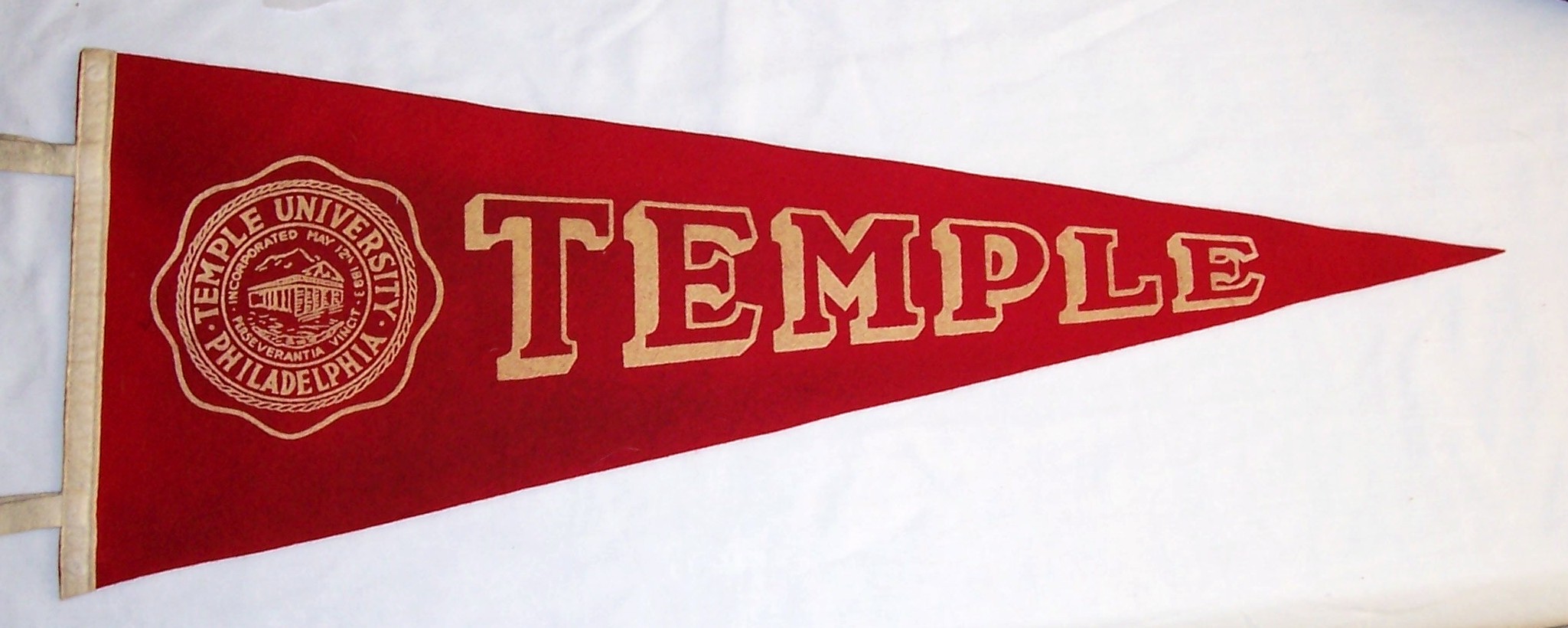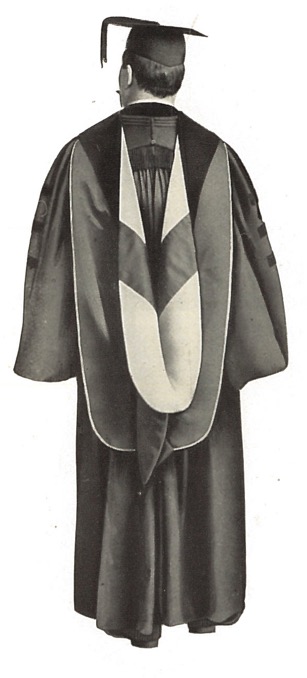Temple University
Pennsylvania
1884



Citations in the World Almanac (listed by cover date; color information is from the previous year): cherry/white (1906-1935)
Although it may have been assigned earlier, the academic hood lining design for Temple University was first cited in a 1918 Encyclopedia Americana article on academic costume written by Gardner Cotrell Leonard, the Director of the Intercollegiate Bureau of Academic Costume (IBAC). Leonard stated that the university had been assigned a hood lining that was white with a cherry red chevron. “Cherry” was typically a term the Bureau used to describe a bright red or scarlet color, but apparently not in this case: a 1958 IBAC list and a 1969 IBAC list both described the shade of Temple’s chevron as “cardinal”, a medium red (or “true red”) that more accurately described the hue of Temple’s “cherry”. A 1972 IBAC list reverted to “cherry red”.
One should observe that by 1918 the IBAC had assigned what on paper might have seemed to have been identical hood linings to schools that used white and cherry red: Rensselaer Polytechnic Institute and Temple University. In actual fact, the “cherry” of Temple was slightly darker than the “cherry” of Rensseaer. To clarify this the IBAC first described Temple’s cherry as “cherry red” (1918) but then as “cardinal” (1958). Over the same period the Bureau changed its description of Rensselaer’s cherry from “bright red” (1918) to “cherry red” (1969).


By 1888 Temple University had become the first college to select “cherry” as its school color. In earlier materials the color was sometimes described as a “cerise” shade – a pinkish magenta color, similar in shade to the bluish-red color of the cooked fruit in a cherry pie or the “rose” of Vassar College. By 1897 white had been combined with cherry as Temple’s second school color, and the cherry color had reddened and darkened to the “true red” shade of a ripe American black cherry, not the bright scarlet red of a maraschino cherry.
